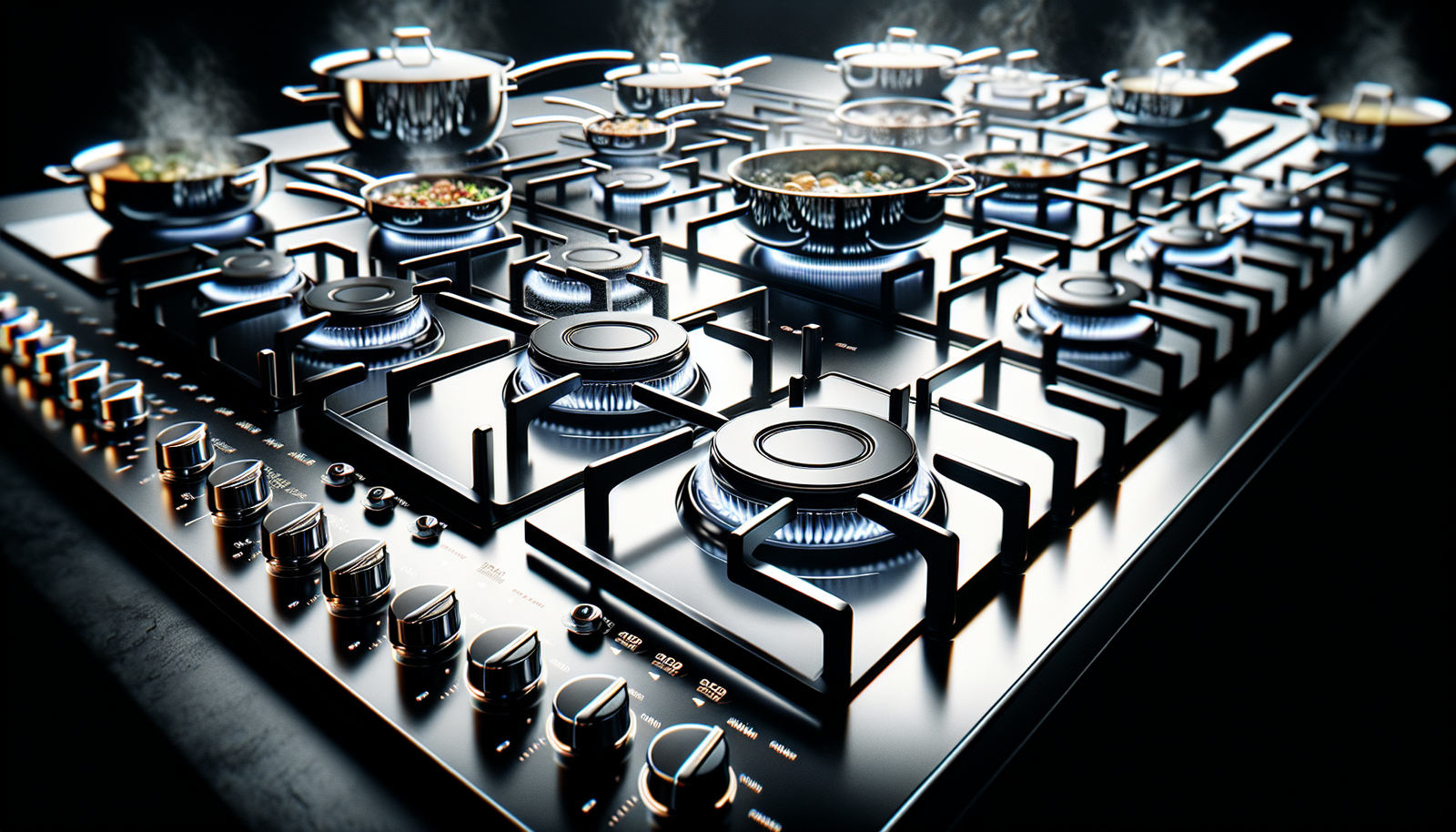The number of burners on a cooktop holds significant importance in the world of culinary arts, where precision and efficiency are key. With each burner serving as a separate cooking zone, the number of burners directly affects the capacity and flexibility of a cooktop. Whether you are a professional chef in a bustling restaurant or a passionate home cook, understanding the significance of the number of burners on a cooktop is essential for creating delicious meals with ease and efficiency.
Significance of the Number of Burners on a Cooktop
Cooking Capacity
The number of burners on a cooktop plays a crucial role in determining the cooking capacity. With more burners available, you can simultaneously cook multiple dishes, saving you time and effort in the kitchen. This is especially beneficial for larger families or people who frequently entertain guests. By having multiple burners, you can cook main dishes, side dishes, and sauces simultaneously, ensuring that everything is ready to be served at the same time.
Efficiency and Time Management
Having a sufficient number of burners allows for better efficiency and time management in the kitchen. With more burners, you can multitask and prepare different components of a meal simultaneously. For example, you can boil water for pasta on one burner while sautéing vegetables on another. This not only saves time but also ensures that each component of the meal is cooked to perfection without having to excessively wait for one item to be completed before starting the next.
Flexibility and Versatility
The availability of multiple burners on a cooktop provides greater flexibility and versatility in cooking. Different dishes require different cooking methods and temperatures. With more burners, you can easily accommodate various cooking techniques such as boiling, simmering, frying, and even grilling. This flexibility allows you to experiment with a wide range of recipes and achieve optimal results for each dish.
Space and Aesthetics
Another factor to consider when choosing the number of burners is the available space in your kitchen and the overall aesthetics of your cooking area. While it’s tempting to opt for a cooktop with the maximum number of burners, you should also consider the size of your kitchen. If you have a small kitchen with limited counter space, a cooktop with fewer burners may be more suitable. Additionally, having a cooktop that perfectly fits the size and style of your kitchen can enhance the overall aesthetics of your kitchen.
Energy Consumption
The number of burners on a cooktop can also impact energy consumption. Generally, more burners mean more energy usage. If you frequently cook large meals or use multiple burners simultaneously, it is important to consider the energy efficiency of the cooktop. Look for cooktops with energy-saving features, such as efficient burners or induction technology, to help minimize energy consumption without compromising cooking performance.
Budget Considerations
The number of burners is often an important factor to consider when budgeting for a cooktop. Cooktops with a higher number of burners usually come at a higher cost. While it’s tempting to opt for the maximum number of burners, it’s essential to strike a balance between the number of burners and your budget. Consider your cooking needs and frequency when deciding on the appropriate number of burners, keeping in mind that having more burners may require a larger financial investment.
Cooking Techniques
Different cooking techniques require varying numbers of burners. For example, if you frequently cook stir-fries or use a wok, a cooktop with a high-powered burner specifically designed for rapid heating may be beneficial. On the other hand, if you enjoy slow cooking or simmering dishes for extended periods, having a dedicated burner for such tasks can enhance your culinary experience. Assessing your preferred cooking techniques and selecting a cooktop with the appropriate burner configuration can greatly enhance your cooking abilities.
Entertaining and Hosting
If you often find yourself hosting gatherings or entertaining guests, having more burners can be extremely advantageous. It allows you to efficiently prepare a wide variety of dishes and accommodate different dietary preferences or restrictions. The ability to cook multiple dishes simultaneously ensures that everyone’s food is cooked to perfection and served hot. With a cooktop equipped with an adequate number of burners, you can confidently host memorable dinner parties and social events.
Frequency of Occasional Cooking
Consider the frequency of your cooking when deciding on the number of burners. If you only occasionally cook or prepare simple meals, a cooktop with fewer burners may suffice. However, if you enjoy cooking elaborate meals or frequently find yourself in the kitchen, more burners can greatly simplify the cooking process. Investing in a cooktop with additional burners ensures that you have the necessary tools and space to comfortably execute a wide array of recipes, making your cooking experience more enjoyable and efficient.
Customization Options
Depending on your preferences and needs, some cooktops offer customization options for the number and arrangement of burners. This allows you to tailor the cooktop to your specific cooking style and requirements. Customization options can include adding griddle or grilling plates, bridging burners to accommodate larger cookware, or even incorporating a built-in deep fryer. These options provide you with the freedom to create a cooktop that perfectly suits your culinary needs and preferences.
In conclusion, the number of burners on a cooktop plays a significant role in determining cooking capacity, efficiency, versatility, and overall cooking experience. Carefully consider your cooking habits, kitchen space, energy consumption, and budget when choosing the appropriate number of burners. By selecting a cooktop with an optimal number of burners, you can enhance your culinary skills, save time in the kitchen, and improve the overall functionality and aesthetics of your cooking area.




